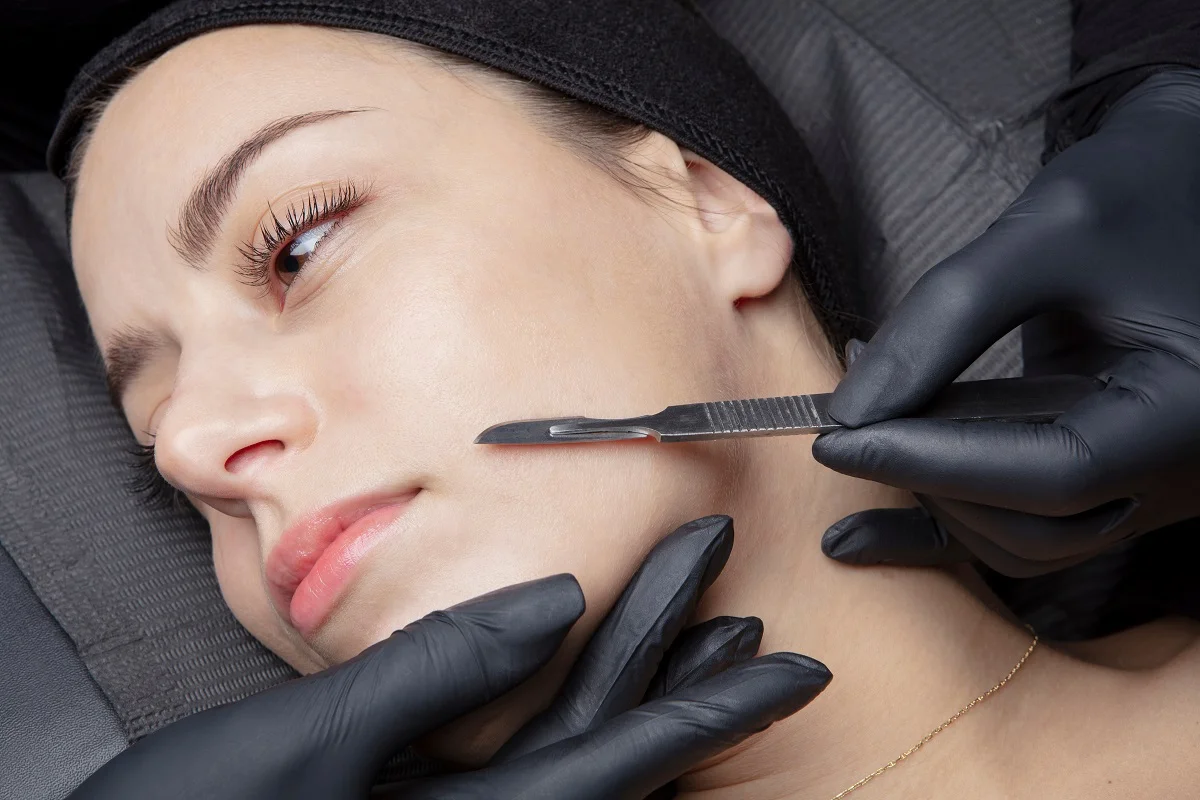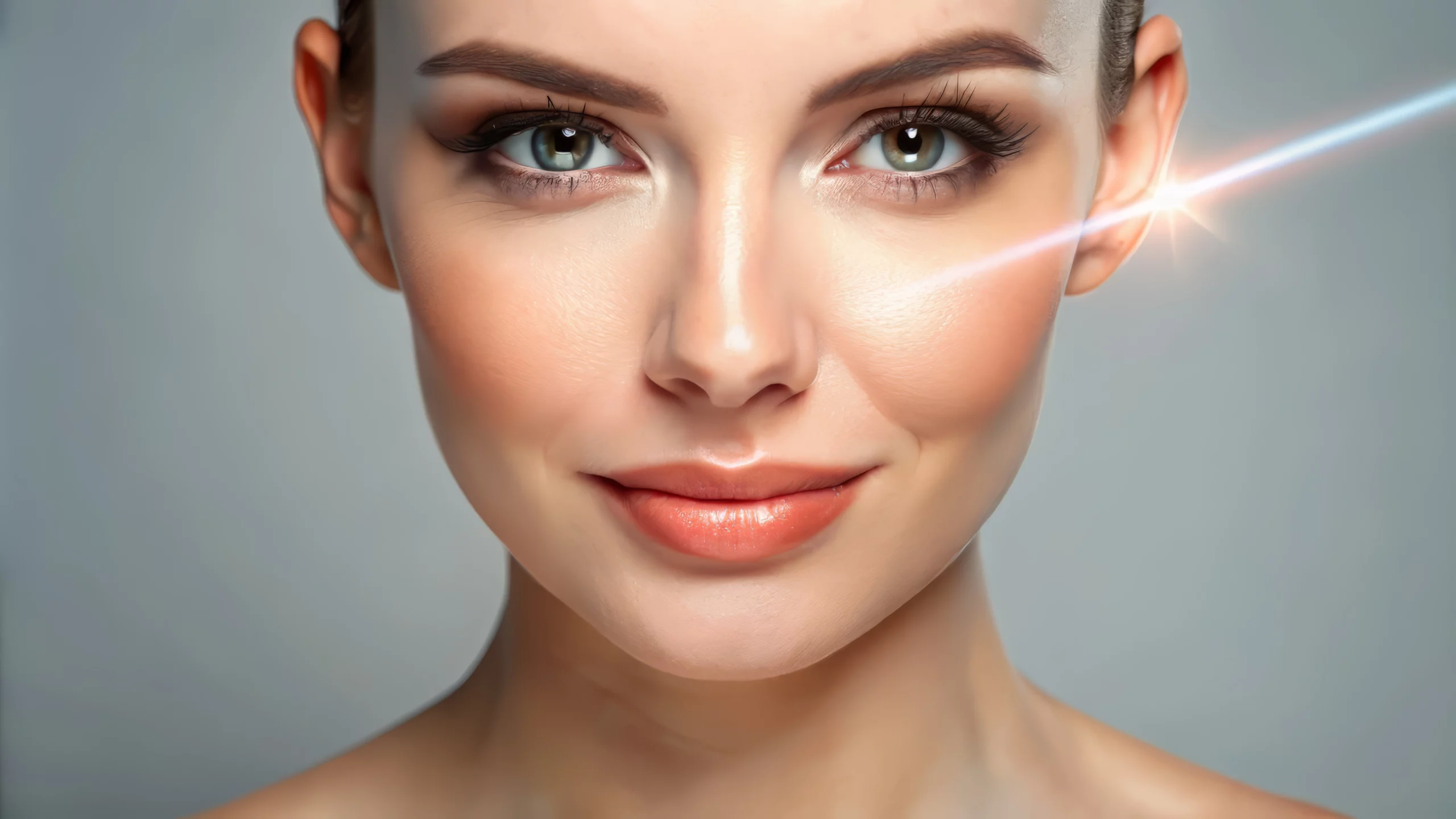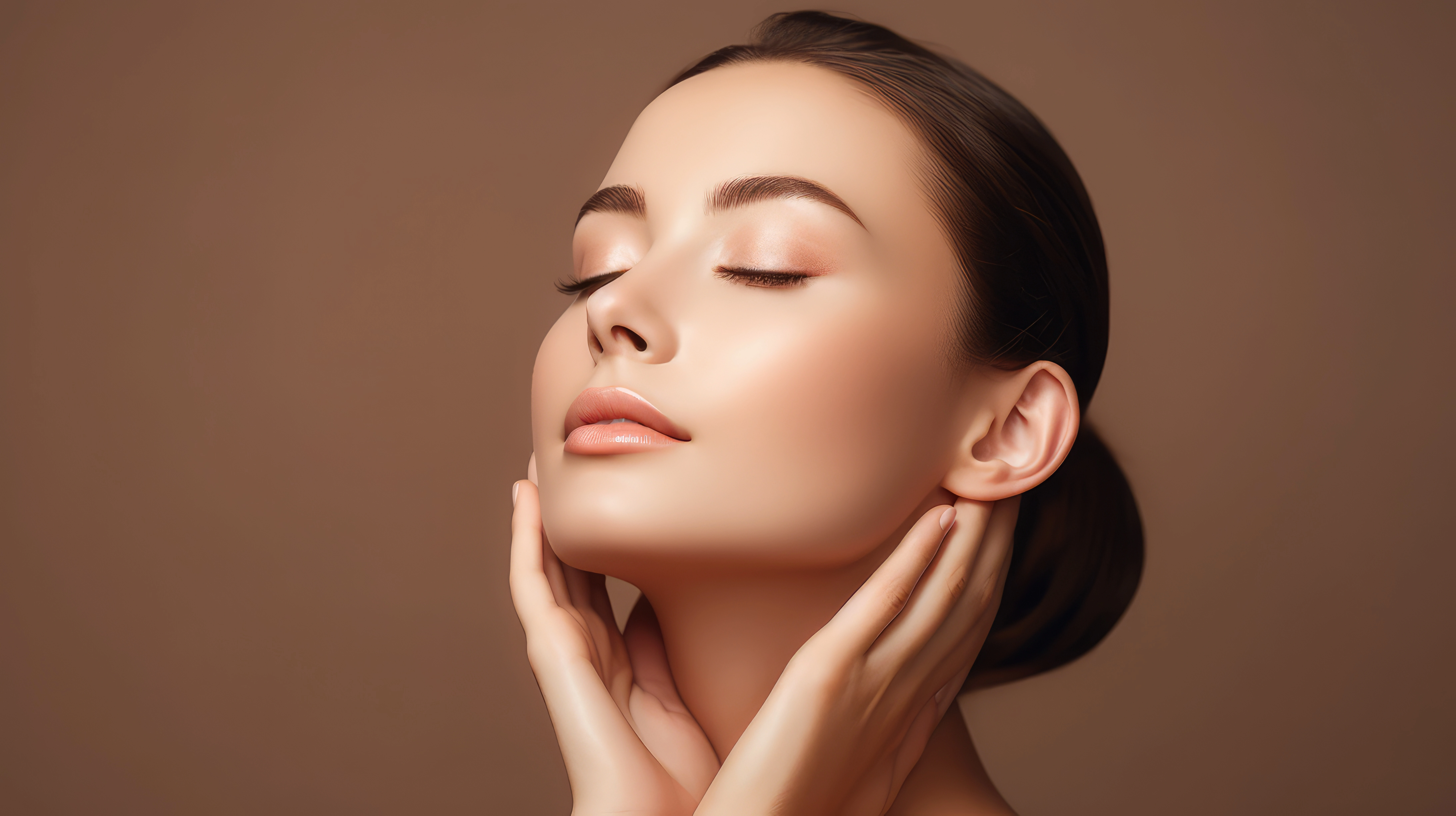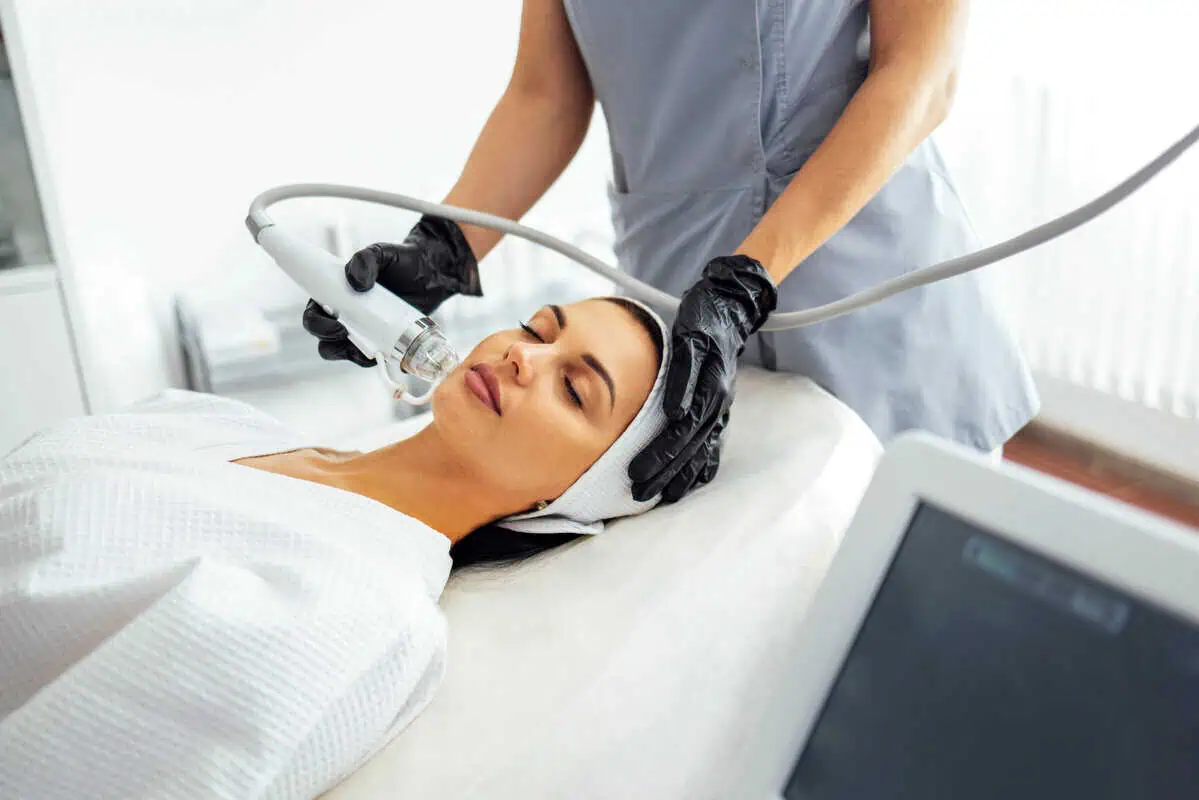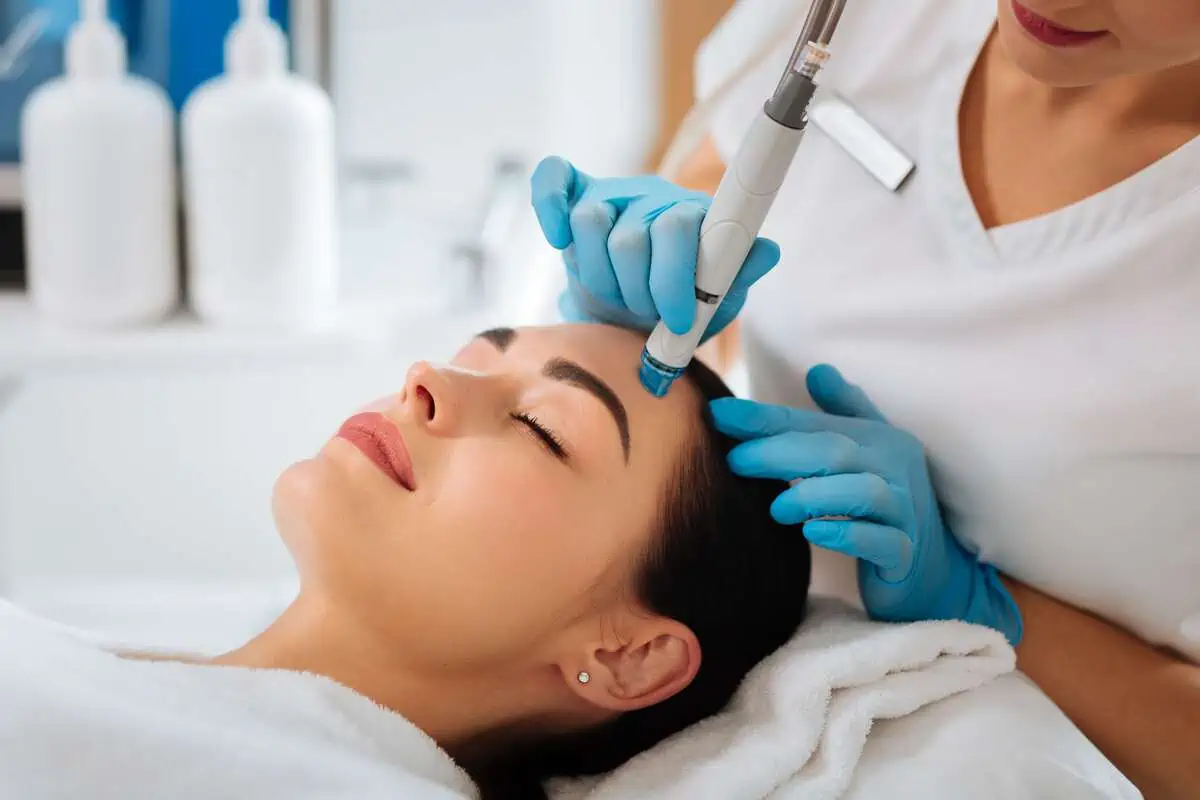Dermaplaning has become an increasingly popular facial treatment that helps to exfoliate the skin and remove peach fuzz. This procedure involves using a sterile surgical blade to remove dead skin cells, dirt, and oil from the skin’s surface. Many people love dermaplaning because it leaves their skin looking brighter, smoother, and more youthful. However, one of the most common questions about dermaplaning is what happens when hair grows back after the treatment. In this blog, we’ll explore the answer to this question and provide some information to help you understand the process.
The Process of Dermaplaning and Why It’s Popular
Dermaplaning is a non-invasive facial treatment performed in a medical spa or a dermatologist’s office. A medical professional uses a sterile surgical blade to exfoliate the skin’s surface during the procedure. The blade is held at a 45-degree angle and is gently stroked over the skin, removing the top layer of dead skin cells, dirt, and oil. This process helps to reveal smoother, brighter, and more youthful-looking skin.
Dermaplaning is popular for several reasons:
- It’s a quick and painless treatment that typically takes around 30 minutes.
- It’s suitable for all skin types, including sensitive skin.
- Dermaplaning helps remove peach fuzz, the fine hair that grows on the face.
Many people prefer to avoid the appearance of peach fuzz and find that it makes their makeup look less smooth and flawless.
Why Does Hair Grow Back After Dermaplaning?
One of the most common questions about dermaplaning is why hair grows back after the treatment. The answer is simple – dermaplaning doesn’t remove the hair follicle, which is the root of the hair. Instead, it removes the hair shaft, part of the hair visible on the skin’s surface.
The hair follicle remains intact, meaning the hair will continue growing back. However, because the hair shaft has been removed, the hair that grows back will be softer and finer. This means it’s less likely to be noticeable or cause problems with makeup application.
How Long Will It Take for Hair to Grow Back After Dermaplaning?
The length of time it takes for the hair to grow back after dermaplaning varies from person to person. In general, hair grows at around 0.5 inches per month. This means it will take approximately 4-6 weeks for the hair to grow back after dermaplaning.
However, it’s important to note that the hair growth cycle is inconsistent. Some people may notice that their hair grows back faster or slower than others. Age, hormones, and genetics can also affect hair growth.
Does Hair Grow Back Thicker or Darker After Dermaplaning?
One of the biggest myths about hair removal is that hair grows thicker or darker after shaving. This is not true, and the same applies to dermaplaning. When hair grows back after dermaplaning, it will be the same color and texture as before the treatment.
People often believe that hair grows back thicker or darker after shaving because the hair shaft is blunt after it’s been cut. This can create an illusion of thicker hair because the blunt end of the hair shaft is wider than the natural tapered end. However, this is only a temporary effect and will resolve itself as the hair grows out.
It’s important to remember that if you have a medical condition such as hirsutism (excessive hair growth), dermaplaning may not be the best treatment for you. In this case, consulting with a medical professional is essential to determine the best course of action.
How to Care for Your Skin After Dermaplaning
After dermaplaning, your skin may be more sensitive than usual. It’s important to avoid harsh products or treatments that could irritate your skin. Here are some tips on how to care for your skin after dermaplaning:
- Avoid direct sun exposure for 24 hours after the treatment.
- Apply a gentle moisturizer to keep your skin hydrated.
- Avoid using harsh scrubs or exfoliants for at least a week after the treatment.
- Avoid using products containing retinoids or AHAs/BHAs for at least 24 hours after the treatment.
- Avoid swimming or using hot tubs for at least 24 hours after the treatment.
In summary, dermaplaning is a popular facial treatment that helps to exfoliate the skin and remove peach fuzz. While hair will grow back after the treatment, it will be softer and finer. With proper care, you can maintain the benefits of dermaplaning and enjoy smoother, brighter, and more youthful-looking skin.
Who is a good candidate for Dermaplaning?
Dermaplaning is generally safe for most skin types and ages, but certain factors may make someone a better or worse candidate for the treatment. Here are some considerations:
- People with active acne, rosacea, or other inflammatory skin conditions may want to avoid dermaplaning, as it can exacerbate these issues.
- People with a history of keloid scarring may want to avoid dermaplaning, as any trauma to the skin can increase the risk of scarring.
- People with sensitive skin may want to avoid dermaplaning or choose a practitioner experienced in working with sensitive skin.
- Pregnant or breastfeeding women may want to avoid dermaplaning, as the hormonal changes during this time can make the skin more sensitive.
Overall, it’s essential to consult with a qualified skincare professional to determine if dermaplaning is right for you.
Can dermaplaning be combined with other skincare treatments?
Dermaplaning can be an excellent standalone treatment but can also be combined with other skincare treatments to maximize results. Here are some examples:
- Chemical peels: Dermaplaning can help prep the skin for a chemical peel, allowing the peel to penetrate more deeply and evenly. This can lead to more dramatic results.
- Microneedling: Dermaplaning can also be combined with microneedling, which involves creating tiny punctures in the skin to stimulate collagen production. Dermaplaning can help remove dead skin cells that could clog the microneedles, allowing for better product absorption and smoother results.
- LED light therapy: Some practitioners may also recommend combining dermaplaning with LED light therapy, which uses different wavelengths of light to treat a variety of skin concerns. The exfoliation from dermaplaning can help enhance the light therapy’s effects.
Discussing combination treatments with a qualified skincare professional is essential to ensure they are safe and appropriate for your skin type and concerns.
Conclusion
In conclusion, dermaplaning is an excellent option for anyone looking to exfoliate their skin, remove peach fuzz, and achieve a smoother, brighter complexion. Although hair will grow back after dermaplaning, it will be softer and finer, making it less noticeable. To guarantee that you get the best results from your dermaplaning treatment, it’s essential to seek the services of a qualified professional.
If you’re searching for a reliable and experienced medical spa, consider booking an appointment at Local Aesthetic Boutique. Their team of experts provides personalized skincare treatments that cater to your unique needs, leaving you with healthy, radiant, and youthful-looking skin. Don’t hesitate to book your appointment today and experience the transformative power of dermaplaning at Local Aesthetic Boutique.
